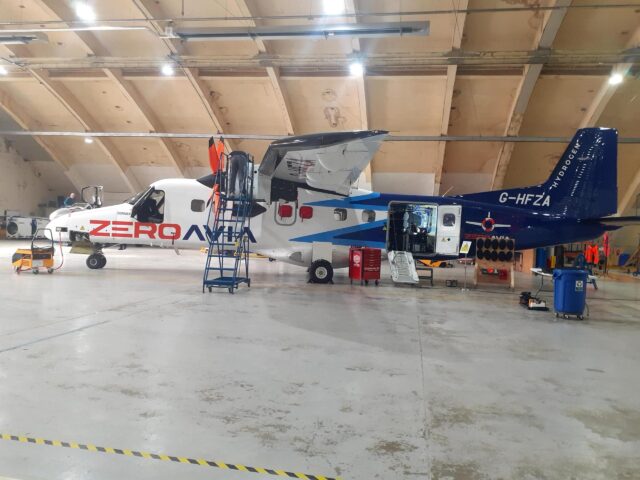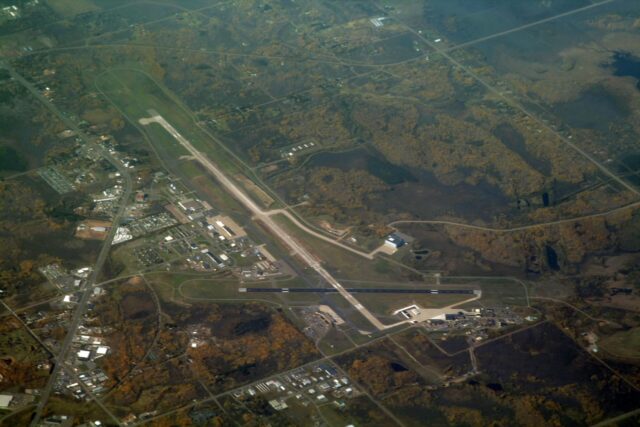Series hybridisation: Turning the dirtiest flights into the most sustainable

Derek Jordanou-Bailey is the Chief Engineer at Helix. His back story includes seven years at Integral Powertrain (IP), from which Helix evolved in 2022, before a stint at Mercedes-AMG HPP (High Performance Powertrains) working on F1 power units. He returned to IP, now Helix, in 2018.
One in every four European flights is less than 270 nautical miles (NM) in distance, classified as ‘very short-haul’ trips. This means a quarter of Europe’s flights are less than the distance between London City Airport and Cologne Bonn Airport.
Very short-haul flights are the most fuel-intensive trip category in all of aviation, because take-off and landing have a disproportionately high fuel burn rate compared to the cruise phase of a flight.
Since very short-haul flights have a comparatively short cruise phase compared to the take-off and landing phases, this means they have a higher average fuel burn throughout the flight.

As a result, these flights cost significantly more per passenger kilometre to operate. And, critically, they emit significantly more emissions, comparatively.
Sub-270NM flights emit 155g of CO2 per passenger kilometre, compared to the average flight’s per-passenger kilometre emissions of 88g.
This runs counter to the need to decarbonise aerospace, since low-carbon flight entails airlines adopting more expensive fuels.
Neither SAF nor electrification can solve the problem of short-haul flying
Sustainable aviation fuel (SAF) is set to account for 65% of the industry’s decarbonisation efforts by 2050, with synthetic SAFs currently costing 10x more per unit than conventional jet fuels.
In this market, the incentive is on airlines to encourage passengers towards longer-haul flights that keep emissions per passenger-kilometre lower.

This problem cannot be solved with outright electrification. This is simply due to energy density: lithium-ion batteries hold 200Wh/kg, while jet fuel holds approximately 12,000Wh/kg. This means that pure electrification is only an option for small turboprop planes.
Assuming an 8.5 tonne fully electrified plane, its maximum range will only be around 150NM – well below what’s required to cover most very short-haul routes.
However, there is an opportunity here: series hybridisation.
Series hybridisation is a quick win for very short-haul flights
This is an approach to hybrid vehicles where the craft itself is always propelled by battery power, but an onboard engine is used to recharge a battery in situ via an onboard generator.
In effect, this exchanges some battery mass for ultra-energy-rich fuel mass, significantly boosting the aircraft’s range. A series hybrid plane can then operate in pure-electric mode during the take-off and landing phases, only then burning fuel when far removed from population centres during its cruise phase.
By turning the electrified turboprop mentioned above into a series hybrid, we can quickly boost its range to 250NM. It would only need to burn 60kg of fuel, compared to a conventional aircraft fuel burn of over 230kg – a nearly 75% saving.

By adopting best-in-class motors and swapping out the propellers for ducted fans, the same plane’s fuel burn could be slashed further to just 25kg. This means that hybridisation could cut the fuel burn of very short-haul flights by around 90%.
Compared to 155g of CO2 per passenger kilometre emitted for very short-haul flights, these series hybrid turboprops would thus only emit 15.5g.
Whereas very short-haul flights currently emit nearly twice as much as the industry average per passenger kilometre, this new architecture would only emit one-fifth as much.
One change to make very short-haul flights sustainable
With one change, very short-haul would suddenly become the least cost- and emissions-intensive flight category in all of aviation. This is particularly exciting at a time when short-haul private plane journeys are booming, since it allows these flights to become the best option available for the planet.
With fuel making up 30% of the operating costs of airlines, this change represents a cost and sustainability revolution for aviation. It offers a chance to make very short-haul routes extremely profitable and sustainable.
Additionally, since this change is unlocked through smaller planes with lower passenger counts, it also offers a chance to reduce over-reliance on large, over-capacity airports in favour of smaller, regional airports.
Series hybridisation, then, doesn’t just offer a chance to reduce a chance to reduce operating costs and emissions. It unlocks a better experience for passengers, reducing their travel time to and from airports and significantly reducing the challenges associated with delays and airspace congestion.
It represents a complete step-change for aviation as a whole.















